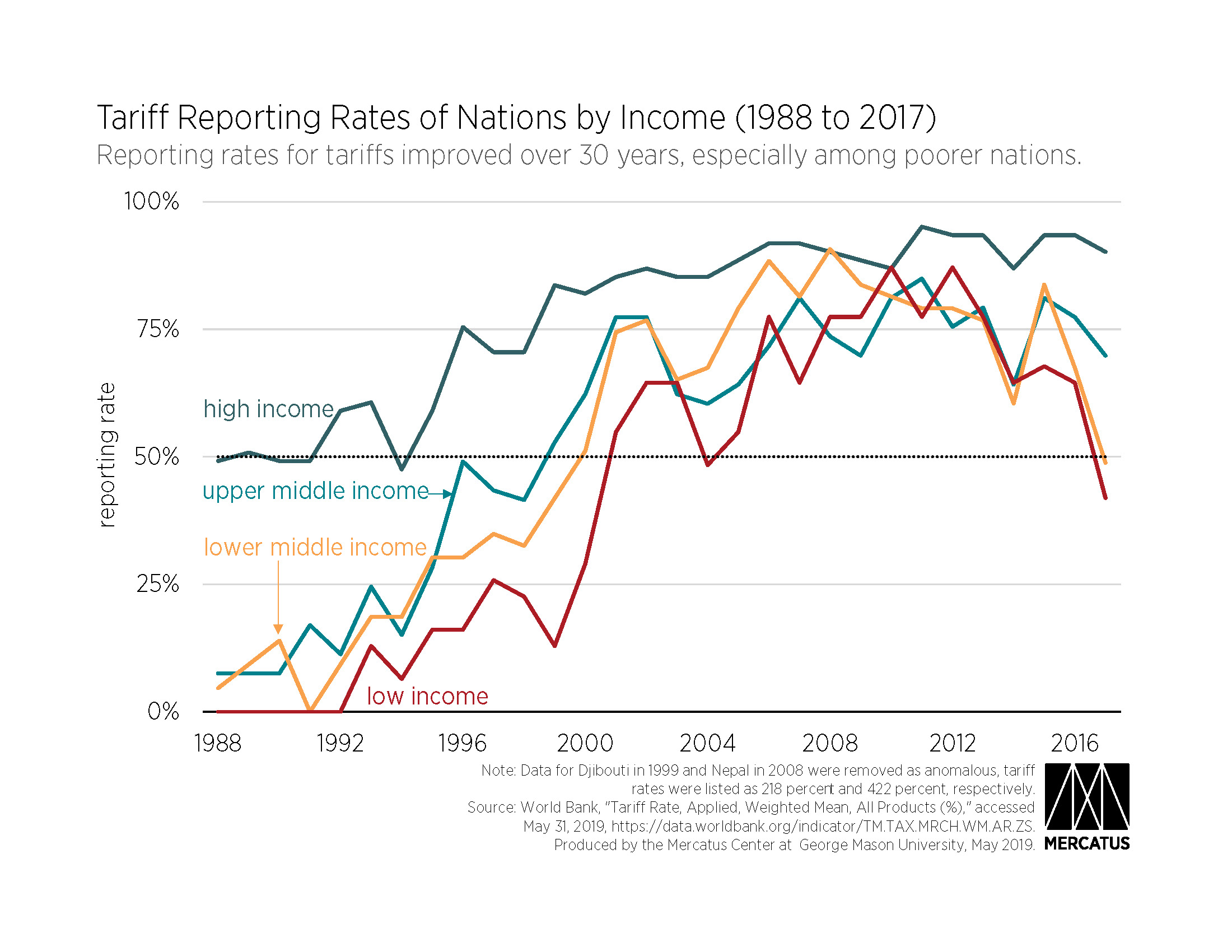The Impact Of Tariff Uncertainty: Cost-Cutting Strategies In U.S. Businesses

Table of Contents
Understanding the Impact of Tariff Uncertainty
Tariff uncertainty creates a volatile business environment, impacting profitability and long-term planning. The unpredictable nature of tariffs makes it difficult for businesses to accurately forecast costs and set prices, leading to several detrimental effects.
Increased Input Costs
Tariffs directly increase the cost of raw materials and components imported into the U.S. This translates to higher production expenses, squeezing profit margins.
- Industries Heavily Affected: Manufacturing (especially sectors reliant on steel and aluminum), agriculture (imports of fertilizers and machinery), and the technology sector (semiconductors and components) are particularly vulnerable.
- Specific Tariff Examples: The tariffs imposed on steel and aluminum in 2018 significantly increased input costs for many manufacturers, leading to price increases for consumers and reduced competitiveness in the global market.
- Ripple Effect on Supply Chains: Increased input costs often lead to cascading effects throughout the supply chain, impacting businesses that rely on affected industries for their own production. The unpredictability of tariffs makes long-term contracts difficult to secure, increasing costs and limiting flexibility.
Reduced Consumer Demand
Higher prices resulting from tariffs can lead to decreased consumer demand, impacting sales and revenue. Consumers become more price-sensitive when facing increased costs for everyday goods and services.
- Products Affected: A wide range of products, from cars and appliances to clothing and food, can be affected by tariff increases, depending on the source of imported components or raw materials.
- Correlation Between Price Hikes and Decreased Demand: Economic studies show a clear correlation between price increases and reduced consumer spending on affected goods.
- Potential for Market Share Losses: Businesses unable to absorb the increased costs may be forced to raise prices, potentially losing market share to foreign competitors offering similar products at lower prices due to favorable trade agreements or lower production costs.
Implementing Effective Cost-Cutting Strategies
To counter the negative impacts of tariff uncertainty, U.S. businesses need to implement effective cost-cutting strategies. These strategies must be proactive, adaptable, and focus on long-term sustainability.
Supply Chain Diversification
Diversifying your supply chain by sourcing materials and components from multiple countries is crucial to mitigate the risk of tariff increases from a single source.
- Benefits of Diversification: Reduced reliance on single suppliers, lower risk of supply chain disruptions, and potential access to lower-cost materials from different regions.
- Challenges of Diversification: Increased logistical complexity, potential quality control issues, and the need for robust supplier relationship management across multiple geographical locations.
- Strategies: Thorough due diligence on potential suppliers, negotiating favorable contracts that include clauses addressing tariff fluctuations, and investing in technology that facilitates efficient global supply chain management.
Automation and Technological Advancements
Implementing automation and technological improvements can enhance efficiency and reduce labor costs, contributing to greater resilience against tariff uncertainty.
- Examples of Automation Technologies: Robotics, AI-powered systems, and advanced manufacturing technologies can streamline production processes and reduce reliance on manual labor.
- Potential ROI on Automation Investments: While initial investments can be substantial, the long-term ROI on automation can be significant in terms of reduced labor costs, increased efficiency, and improved quality.
- Impact on Workforce Requirements: Businesses should strategically plan for workforce transitions, ensuring reskilling and upskilling initiatives for employees to adapt to the changing technological landscape.
Lean Manufacturing Principles
Adopting lean manufacturing principles helps minimize waste, optimize processes, and reduce costs throughout the entire production process.
- Key Concepts: Just-in-time inventory management, Kaizen (continuous improvement), 5S (workplace organization), and value stream mapping.
- Examples of Lean Manufacturing Implementations: Numerous industries, from automotive to food processing, have successfully implemented lean manufacturing techniques to achieve significant cost savings.
- Importance of Continuous Improvement: Lean manufacturing requires a commitment to ongoing process optimization and employee involvement to identify and eliminate waste, leading to greater operational efficiency and resilience.
Negotiating with Suppliers
Strong supplier relationships and effective negotiation are critical for securing favorable pricing and payment terms.
- Strategies for Negotiating Better Prices: Leverage volume discounts, negotiate long-term contracts, and explore alternative payment structures.
- Building Strong Supplier Relationships: Open communication, collaboration, and mutual trust are essential for building strong, mutually beneficial supplier relationships.
- Effective Negotiation Techniques: Understanding supplier costs, market dynamics, and alternative sourcing options will strengthen your negotiating position.
Long-Term Strategies for Navigating Tariff Uncertainty
Addressing tariff uncertainty effectively requires not just short-term cost-cutting, but also proactive long-term strategic planning.
Political Advocacy
Engaging with policymakers and trade organizations is crucial to advocate for policies that reduce tariff uncertainty and promote fair trade practices.
- Examples of Advocacy Groups: Industry-specific trade associations, chambers of commerce, and national business organizations can provide platforms for collective advocacy.
- Importance of Lobbying Efforts: Effective lobbying can influence policy decisions and create a more stable and predictable trade environment.
- Benefits of Collaborative Action: Collective action by businesses within an industry can amplify their voices and increase their impact on policy decisions.
Strategic Planning and Forecasting
Developing robust forecasting models to anticipate potential tariff changes and adjust strategies accordingly is essential for long-term resilience.
- Methods for Forecasting Tariff Changes: Utilize market analysis, political risk assessments, and data analytics to forecast potential tariff changes and their impact on your business.
- Importance of Scenario Planning: Develop contingency plans for various tariff scenarios, allowing for flexible adaptation to changing circumstances.
- Role of Data Analytics: Leveraging data analytics can provide valuable insights into market trends, competitor behavior, and potential risks associated with tariff fluctuations.
Conclusion
Tariff uncertainty presents significant challenges to U.S. businesses, impacting input costs and consumer demand. However, by implementing the cost-cutting strategies outlined—supply chain diversification, automation, lean manufacturing, effective supplier negotiations, political advocacy, and strategic planning—businesses can mitigate these risks and enhance their long-term stability and profitability. Don't let tariff uncertainty cripple your business. Implement these strategies today to navigate the fluctuating landscape and secure your future. Proactive management of tariff risk is crucial for survival and success in today's global economy.

Featured Posts
-
 New Music Willie Nelson Releases 77th Solo Album
Apr 29, 2025
New Music Willie Nelson Releases 77th Solo Album
Apr 29, 2025 -
 Capital Summertime Ball 2025 Tickets Everything You Need To Know
Apr 29, 2025
Capital Summertime Ball 2025 Tickets Everything You Need To Know
Apr 29, 2025 -
 Alan Cummings Favorite Scottish Childhood Pastime Revealed By Cnn
Apr 29, 2025
Alan Cummings Favorite Scottish Childhood Pastime Revealed By Cnn
Apr 29, 2025 -
 Fort Belvoir Holds Candlelight Vigil Remembering Fallen Soldiers
Apr 29, 2025
Fort Belvoir Holds Candlelight Vigil Remembering Fallen Soldiers
Apr 29, 2025 -
 Minnesota Faces Pressure Attorney Generals Transgender Athlete Ban Directive
Apr 29, 2025
Minnesota Faces Pressure Attorney Generals Transgender Athlete Ban Directive
Apr 29, 2025
Latest Posts
-
 Ines Reg Critiquee Natasha St Pier Protegee Decryptage De Dals
May 12, 2025
Ines Reg Critiquee Natasha St Pier Protegee Decryptage De Dals
May 12, 2025 -
 Chantal Ladesou Entretien Et Interviews Exclusives
May 12, 2025
Chantal Ladesou Entretien Et Interviews Exclusives
May 12, 2025 -
 Dals L Avis Tranche Sur L Ouverture D Ines Reg Natasha St Pier Epargnee
May 12, 2025
Dals L Avis Tranche Sur L Ouverture D Ines Reg Natasha St Pier Epargnee
May 12, 2025 -
 Mask Singer 2025 L Autruche Revelee La Reaction De Chantal Ladesou Et Laurent Ruquier
May 12, 2025
Mask Singer 2025 L Autruche Revelee La Reaction De Chantal Ladesou Et Laurent Ruquier
May 12, 2025 -
 Converse Signs Celtics Guard Payton Pritchard To Shoe Deal
May 12, 2025
Converse Signs Celtics Guard Payton Pritchard To Shoe Deal
May 12, 2025
